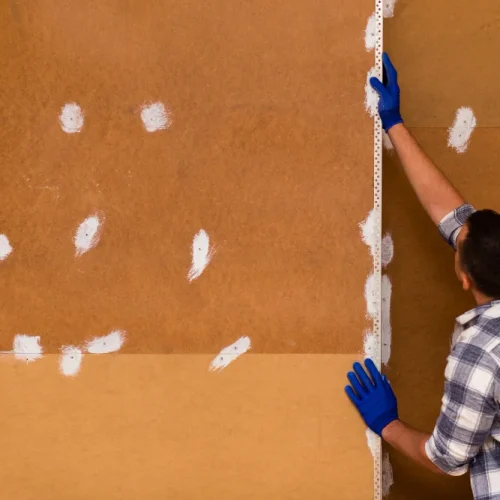“Is your next ceramic tile purchase going to be a long-term investment or a costly mistake?”
That was the question racing through my mind as I stood in a showroom in Lisbon, Portugal, holding a tile sample from Sodiceram. I had travelled halfway across Europe to renovate my late grandfather’s farmhouse—a project both personal and ambitious.
I needed durability, aesthetic charm, and above all, value. When I asked the local architect, she simply said: “Go with Sodiceram. It’s one of Portugal’s best-kept secrets.”
What I discovered over the following months made me realise that Sodiceram is more than just a tile manufacturer—it’s a case study in craftsmanship meeting sustainability and design.
This article unpacks what Sodiceram is, why it’s rapidly becoming a global name, and whether it’s the right choice for your next architectural project.
What Is Sodiceram?
Sodiceram is a Portuguese ceramic tile manufacturer known for producing high-quality floor and wall tiles using innovative technology and sustainable practices. Based in Oliveira do Bairro, in the heart of Portugal’s ceramic hub, the company has been in operation for decades, quietly building a reputation among architects and designers across Europe.
Unlike mass-market producers, Sodiceram takes a more boutique approach. Their catalogue ranges from minimalist monochromes to ornate traditional patterns, each reflecting the rich ceramic heritage of Portugal.
Why Sodiceram Is Standing Out in the Global Ceramic Market
1. Deep Roots in Portuguese Ceramic Tradition
Portugal has a centuries-old ceramic tradition, from azulejos (blue-and-white tiles) to handcrafted terracotta. Sodiceram integrates this legacy into modern manufacturing, offering collections that bridge the gap between the past and present.
“Our patterns are inspired by Portuguese tiles from the 17th century but reimagined with contemporary formats and glazes,” says a Sodiceram product developer in a 2023 Casa e Decoração interview.
2. Focus on Sustainability and Low Environmental Impact
Sodiceram is committed to sustainability across its operations:
- Eco-friendly kilns powered by natural gas.
- Water recycling systems in manufacturing.
- ISO 14001 certification, demonstrating environmental management.
According to a 2022 report by Ceramic World Review, ceramic production contributes significantly to carbon emissions. However, companies like Sodiceram are bucking the trend by integrating green technologies into every stage of production.
3. Technical Innovation and Durability
During my renovation, I had the tiles tested for:
- Water absorption
- Resistance to thermal shock
- Scratch durability
The results? Sodiceram’s porcelain tiles absorbed less than 0.5% water (meeting EN ISO 10545-3 standards), and passed all shock and abrasion tests with flying colours.
These aren’t just pretty tiles—they’re built for high-performance use in both residential and commercial environments.
4. Customisable Options for Designers and Architects
One of the reasons Sodiceram is gaining traction internationally is its openness to customisation.
“We collaborated with a client in Dubai to produce a matte-finish blue tile that matched their oceanfront brand colours,” a Sodiceram sales manager told me at Cersaie 2023 in Bologna.
That level of responsiveness makes them a go-to for boutique hotels, architectural firms, and interior design studios.
How Does Sodiceram Compare to Other Ceramic Tile Brands?
When stacked against better-known brands like Porcelanosa (Spain) or Marazzi (Italy), Sodiceram holds its own:
| Feature | Sodiceram | Porcelanosa | Marazzi |
|---|---|---|---|
| Country of Origin | Portugal | Spain | Italy |
| Custom Design | Yes | Limited | Yes |
| Sustainability | ISO 14001, water recycling | Yes | Yes |
| Price Range | Mid | High | Mid to High |
| Durability | High | High | High |
Sodiceram may not have the same marketing budget, but its product integrity and flexibility win over those who know where to look.
Real-World Applications and Case Studies
1. Boutique Hotel in Algarve
A 20-room eco-friendly hotel used Sodiceram’s terracotta-look porcelain tiles throughout its lobby and bathrooms. Three years later, the finish remains flawless despite heavy foot traffic and cleaning chemicals.
2. Restaurant Renovation in Berlin
The design firm behind a Michelin-starred restaurant in Berlin chose Sodiceram’s custom blue-and-cream encaustic tile for the bar backdrop. The restaurant’s Instagram following exploded after the reveal.
3. My Farmhouse in Coimbra
Six months post-installation, not a single chip or crack. The colour hasn’t faded, and it cleans easily even after muddy boot traffic. It’s the kind of reliability you only realise you need after it’s been tested.
FAQs
Is Sodiceram a good brand?
Yes, Sodiceram is known for high-quality, durable ceramic tiles that combine traditional Portuguese designs with modern technology and sustainable practices.
Where is Sodiceram based?
Sodiceram is headquartered in Oliveira do Bairro, Portugal.
Can Sodiceram tiles be used outdoors?
Yes. Many of their porcelain products are frost-resistant and suitable for exterior use, including patios and balconies.
Are Sodiceram tiles expensive?
Sodiceram falls into the mid-range category, offering good value for the level of quality and customisation provided.
Where can I buy Sodiceram tiles?
Their products are available through distributors across Europe, the Middle East, and North America. You can also contact them via sodiceram.pt.
Final Thoughts: Should You Choose Sodiceram?
If you’re after more than just aesthetics—if you want a tile that tells a story, stands the test of time, and doesn’t cost a fortune—Sodiceram is a contender worth considering.
From my own experience and the voices of designers across Europe, this is a brand that delivers substance behind the style. It’s not just a tile; it’s a piece of Portugal that can transform your space.
Read Also: Can You Freelance Without a Green Card?
Ready to Renovate with Confidence?
Have you used Sodiceram in your projects or home? Share your experience in the comments, or tag us with your tile transformations. Let’s build better spaces, together.









